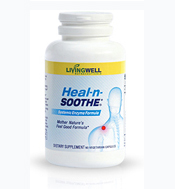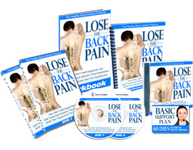What is S-I Joint Dysfunction?
By Dr. Robert V. Duvall, DPT, MPT, ATC, MGFI
The S-I joint is one of the most misunderstood areas of the human body. It has been the source of much controversy in the medical community for many years. Much of the debate relies on the fact that there are few reliable evaluation methods for the S-I joint.
Contrary to disc injuries, which can be evaluated using many types of diagnostic tools, examining the S-I joints has proved to be quite unreliable. Clinicians need to rely mostly on their experience rather than simple methods used to examine the low back. Most medical professionals do not acknowledge it as a source of pain and dysfunction. So patients leave a medical office with an incomplete evaluation and often times, an inaccurate diagnosis.
The S-I (Sacro-Iliac) joint is comprised of two bones; the sacrum and the ilium. You have two S-I joints (left and right). They are located basically where the spine meets the pelvis. Look for the two dimples in your low back. These two joints allow for very little movement overall as compared to other more prominent joints such as your hip or shoulder. The pelvic girdle is generally described as the two S-I joints, the pubic symphysis (pubic bone in front), the two hip joints, and the bottom two vertebrae (L4, L5).
What do you feel?
Pain located at or near the S-I joint on one side or both sides. Pain located in the low back, buttock, and/or groin area. Another common symptom of a S-I joint dysfunction is “sciatica”. Sciatica is best described as a sharp, often shooting pain that begins in the buttocks and goes down the back of one leg. S-I joint dysfunction may also cause nerve irritation of the nerves that supply the groin or front of your thigh.
Other symptoms include:
- 1. Weakness in one leg or both legs; difficulty standing on one leg and raising the other leg (like marching)
- 2. Numbness and tingling in one leg (pins & needles)
- 3. A burning pain located near the “dimples”
- 4. Difficulty raising from a chair
- 5. Muscle discomfort in the buttock, hip, or low back (over 30 muscles attach to the pelvis; from the hip, buttock, thigh, low back.
How does this happen?
S-I joint dysfunction is usually caused by an imbalance in the muscles of the hips and glutes and it can also be caused by a fall or other traumatic event, such as a car accident.
A condition known as “hypermobility” may also predispose an individual to S-I joint dysfunction. “Hypermobility” is best described as a condition in which the joints have too much mobility. This condition generally affects women more than men. Different hormone levels present in women, specifically “relaxin”, can influence hypermobility. This hormone is released to prepare the body for pregnancy, and its level in the blood changes throughout pregnancy process. It basically causes the ligaments to “relax” and allow for more movement to occur in the pelvic girdle region.
The best treatment options
First of all, the evaluation is critical to the success of treating a S-I joint dysfunction. Most dysfunctions can be treated with manual techniques that generally involve “mobilizations”, “manipulations”, or “muscle energy techniques”. These techniques must be applied by a skilled medical professional, such as a physical therapist. These techniques can prove to be quite helpful when utilized appropriately following a thorough evaluation.
Once appropriate manual techniques have been administered, a comprehensive exercise program must be implemented to address the following areas, specifically muscle imbalances:
- 1. Lumbar stabilization program: strengthening abdominals and buttock muscles
- 2. Improve flexibility in lower extremity musculature
Some S-I joint dysfunctions may linger on for months and even years. Remember, if you are engaged in a current treatment plan with little to no improvement, seek other options. If you think you may have a S-I joint dysfunction, the first step is to find a healthcare professional who is skilled and experienced in addressing muscle imbalances.
Top Recommendations
Here are the Top Recommended Solutions for Back and Neck Pain

Natural Pain Reliever delivers instant relief from chronic pain! This pain fighting formula penetrates deep into your muscle tissue and repairs damage to your body's cells - where all of your muscle pain starts. Proven to be 100% Effective, Rub it on and the pain is gone!
Click Here to Learn More
Heal-n-Soothe™ is a combination of the most powerful natural anti-inflammatory and pain relieving ingredients known to man... and have been scientifically proven to work. And unlike NSAID's, there are no dangerous side effects..
Click Here to Learn More
Get rid of your back-pain for good. Join over 56,712 people who've erased back pain and sciatica from their lives. This complete back pain relief system will show you how to identify the true cause of your pain, and get lasting relief once and for all!
Click Here to Learn More
